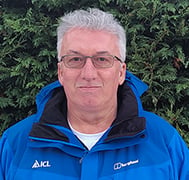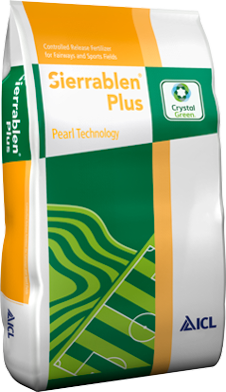PitchFocus: End-of-Season Renovation
Gone are the days of 8–10 week establishment windows. With compressed renovation periods and the pressure of early-season fixtures, every day counts. The window from seed to play has narrowed, and achieving uniform germination, fast rooting, and robust early sward development is more critical than ever.
On this page:
Modern renovation strategies must be technically informed and proactive. While light, air, and temperature are typically in our favour during summer renovations, moisture management and nutrition become the key levers we can control.
When optimised, these inputs not only accelerate establishment but also build resilience into the sward, setting the stage for the demanding season ahead.
Nutrition: Priming the Soil for Root Development
Pre-seeding nutrition plays a pivotal role in giving young seedlings the resources needed to develop rapidly. On professional, sand-based rootzones — where nutrient retention is low — the inclusion of elevated phosphorus is particularly important.
Phosphorus availability directly influences the speed and extent of early root growth.
Sierrablen Plus Renovator (20-20-8) has shown excellent performance in these conditions. Applied to the surface after seeding, it provides a base feed with 80% controlled-release nitrogen over a 3-month period.
Trial work on a professional sports pitch construction demonstrated significantly deeper root development — both in length and mass — compared to other control release options. This supports its position as a fertiliser specifically designed for a sand dominated seedbed to ensure strong development both above and below ground.

Where a deeper working is possible, such as cultivation to 6cm+, Sierrablen Plus 11-11-5 with Pearl offers an alternative.
The inclusion of recycled, plant-available phosphorus (Pearl) alongside controlled release nitrogen ensures sustained nutrient availability during root initiation, driven by organic acid exudation from the emerging seedling roots. When used in the correct situation it offers both a responsible and effective choice of pre-seed fertilser for turf managers.
Moisture Management: Ensuring Consistent Germination
Moisture and temperature are the two key drivers of germination. Temperature is rarely limiting during summer works, but moisture availability in the top 20mm of the profile is critical. Inconsistencies here can lead to patchy germination, uneven establishment, and early vulnerability to stress and wear.
Qualibra wetting agent applied immediately after seeding has been shown to significantly enhance seedling root length and biomass.

Syngenta trial work demonstrated that untreated turf took up to three weeks longer to reach the same growth stage as areas treated with Qualibra — a difference that can define the success or failure of a renovation schedule.

Qualibra’s dual-action technology improves both lateral and vertical water movement — maintaining surface moisture without excessive saturation, while drawing water deeper to support root extension.
Biostimulants: Enhancing Soil-Plant Interactions
Not all seaweed products are created equal.
SMX, a sustainably harvested seaweed extract using a unique alkaline extraction process, is formulated to support three critical establishment functions: root development, stress tolerance, and the stimulation of beneficial soil biology.
Applied post-germination, SMX improves seedling health and rooting vigour — with trial work showing significantly increased populations of beneficial rootzone microflora compared to untreated controls. This biological support can enhance nutrient uptake and early plant resilience.

Crucially, SMX can be tank-mixed with Qualibra, enabling a dual-targeted application focused on soil function and establishment.
A programme of repeated applications every four weeks during the early stages of sward development can support sustained progress beneath the surface.
Plant Growth Regulation: Enhancing Density and Resilience
The use of plant growth regulators (PGRs) in establishment programmes is gaining traction, particularly where tight renovation windows demand quicker surface consolidation and improved early resilience.
Primo Maxx II, containing trinexapac-ethyl, is a well-researched and widely adopted PGR that offers several key benefits:
-
Promotes deeper rooting and improved root mass
-
Enhances wear tolerance and stress resilience
-
Encourages a compact growth habit that supports surface uniformity
-
Improves visual quality through increased chlorophyll content in the leaf
These attributes make Primo Maxx II particularly valuable during the critical early stages of turf development. However, a common concern among turf managers is when and how to introduce it safely — especially on juvenile plants that are still establishing.

Primo Maxx II trial
Recent trial work has provided clear guidance. When integrated as part of an ITM (Integrated Turf Management) programme alongside balanced nutrition and moisture management, applying Primo Maxx at week 4 post-germination at 1.0 L/ha proved highly effective.
In the same programme, combining this with 40 L/ha of Greenmaster Liquid Spring & Summer (14-5-7) — delivering 5.6 kg N/ha — significantly improved turf density, rooting, and surface quality compared to untreated controls.
The key to success lies in timing and integration. Introducing PGRs too early or at excessive rates can limit development rather than support it.
For optimal results, it’s recommended to work closely with your ICL Technical Area Sales Manager to plan PGR applications in conjunction with your nutritional and moisture strategy.
Disease Management: Protecting Young Swards Under Stress
Rapidly growing, moisture-rich, nutrient-fed seedling swards are inherently at risk of disease — particularly leaf spot, damping off and in high sustained temperatures grey leaf spot, brown patch and pythium.
While good cultural practices are the first line of defence, even well-managed pitches can encounter high disease pressure in warm, humid conditions.
FR321 offers a well-rounded solution for early-stage disease protection (applied at the 2 leaf stage normally 7 – 10 days after germination)’.
. Containing Heritage (systemic), Medallion TL (contact), and Ryder pigment, this triple-action formulation provides:
- Internal protection from disease via xylem-translocated activity
- Surface spore control for immediate knockdown
- Light-stress mitigation from UV protection, aiding sward colour and recovery
FR321 is effective both preventatively and curatively, but best results are achieved when applied at the earliest signs of disease pressure — ideally before visible infection occurs. Proactive identification of environmental triggers and risk periods remains the cornerstone of effective disease management during establishment.
Once beyond the two-leaf stage, Ascernity can be considered as a follow-up option. This dual systemic fungicide offer robust protection and resistance management through alternative FRAC groups, particularly when Ryder pigment is not required for visual presentation.
Summary: Setting Up for Success
Pitch renovation is no longer just about recovering surface aesthetics. It’s about building a high-performing, resilient surface that can handle immediate use and sustain performance through the demands of the season.
By taking a technically informed approach to:
- Deliver balanced, root-driven nutrition
- Ensure uniform and responsive moisture management
- Enhance soil-plant biology through targeted biostimulants
- Protect vulnerable seedlings from early disease
…we can convert tight renovation timelines into thriving, game-ready pitches.
The establishment phase remains the most critical window in turf development. The most effective managers don’t wait for problems to appear — they anticipate them, make informed, proactive decisions, and deploy proven technologies at the right time.
What’s increasingly clear is that a truly successful renovation relies on an integrated approach. Nutrition, moisture management, biostimulants, and disease control must all work in unison to support the sward through to full establishment. Because once the whistle blows, there’s no margin for error.
If you’d like to learn more about the trial data referenced in this article, or would value support in creating a tailored renovation and establishment plan for your surfaces, please get in touch with your local ICL Technical Area Sales Manager.














